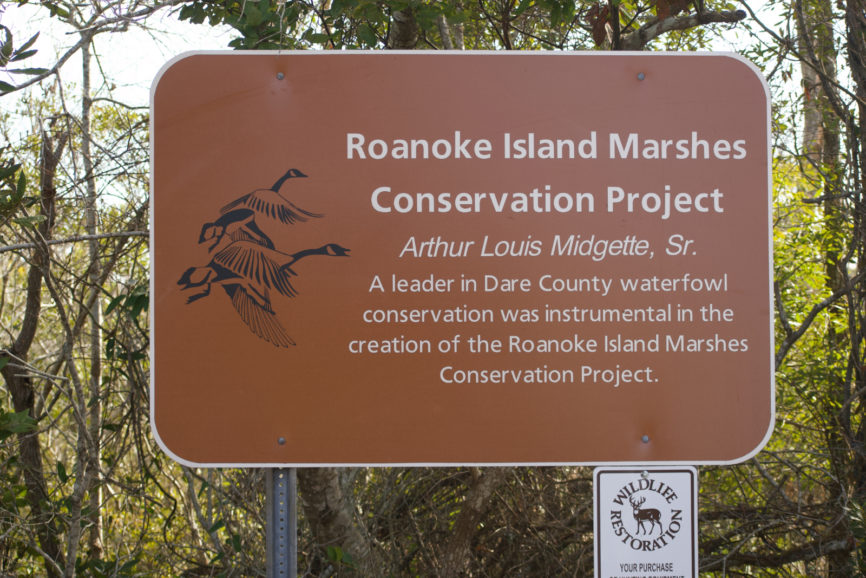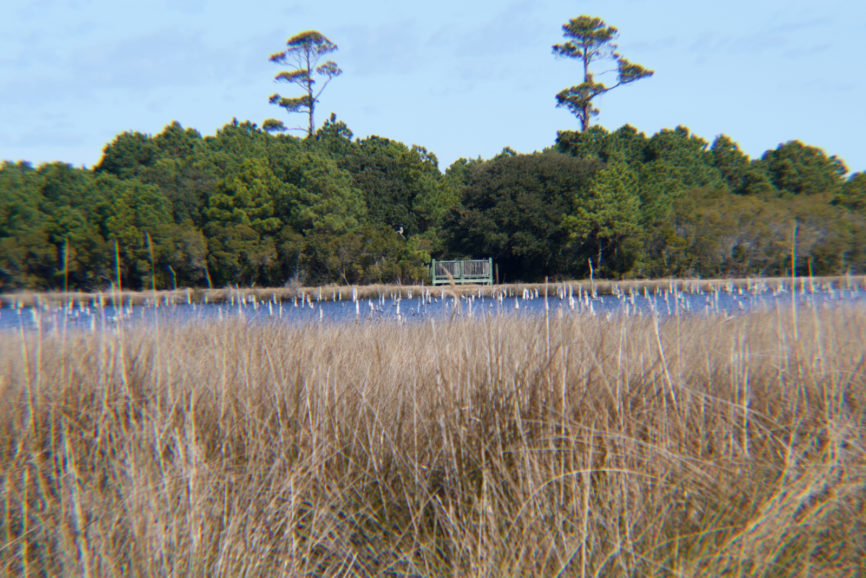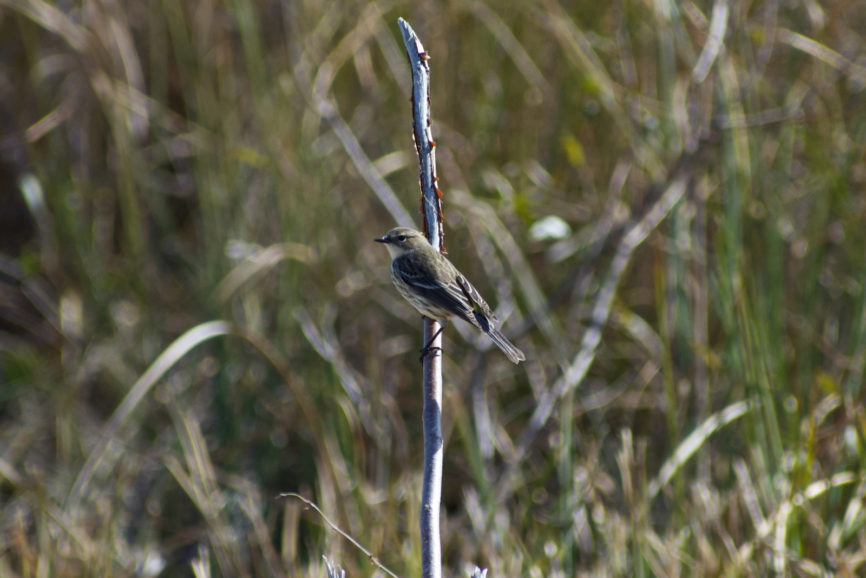About 200 yards south of the intersection of US64 and NC 345—the road that goes to Wanchese—there’s a small parking lot on the left side as the highway heads south. There’s a sign there about the Roanoke Island Marshes Midgett Impoundment. A little off to the right, a trail leads to the impoundment.
The Roanoke Island Marshes Game Lands is about 1,800 acres, although almost all of it is accessible only by boat. But the impoundment is readily accessed with a trail running along the dike. This path is flat and makes for an easy way to access and learn about an Outer Banks marsh and wetland.

For anyone going there, take a camera or binoculars. This is a birder’s paradise.
The total distance around the impoundment is a little more than a mile. There are two observation decks on the walk, but there are much better vistas of the impoundment from the trail than the observation points.
The impoundment is part of a wetlands restoration project North Carolina is undertaking with some partner organizations. Because of this, the flow of water into the impoundment is regulated to ensure there is always a healthy level of water in the system.

Like any wetland, bird species change with the seasons, and from late fall to early spring, this is a wonderful place to view migratory waterfowl. The waters tend to be on the fresh side of brackish, and ducks especially seem to like the habitat.

While walking along the path, be sure to keep an eye on the marsh that is not part of the impoundment. The waters here are often filled with waterfowl as well.
In addition to the waterfowl, which are seasonal, the waters are teeming with shorebirds and resident marsh dwellers. Great blue herons are common, and there will be an occasional green heron. White ibis may show up from time to time. White egrets and snowy egrets are common.
But the marsh is not the only place to look. Surrounding the impoundment is a live oak hammock. Because of the environment, the breaches of the live oak are almost a thicket, an ideal habitat for songbirds.
In the fall and winter, yellow-rumped warblers are everywhere. They like to flit through the branches of the live oak, perch for a moment and then move on. Although considered a medium-sized warbler, they are actually quite small and will often perch in the reeds by the trail to grab a quick taste of the seeds. They are also sometimes called butter butts—referencing their butter-shaded butt.

Depending on the season, butter butts are the more common bird in the thickets, but there are quite a variety of others as well. Red-winged blackbirds are common. Mockingbirds and catbirds as well.
On the north end of the impoundment, there’s a small pine forest. That’s a good place to look for woodpeckers.
And don’t forget to look up. The open spaces are prime hunting grounds for birds of prey, and hawks and osprey are common. There have been sightings of bald eagles as well.
A visit to the Midgett Impoundment is not an all-day affair—at all. The total distance along the dike is a little more than a mile, and even with stopping for pictures or gazing through binoculars at birds, the total time will probably be about an hour and a half. Maybe two hours. Yet, for anyone hoping to get an idea of just how varied and remarkable the variety of birds that call the Outer Banks home really is, it will be a wonderful visit.
